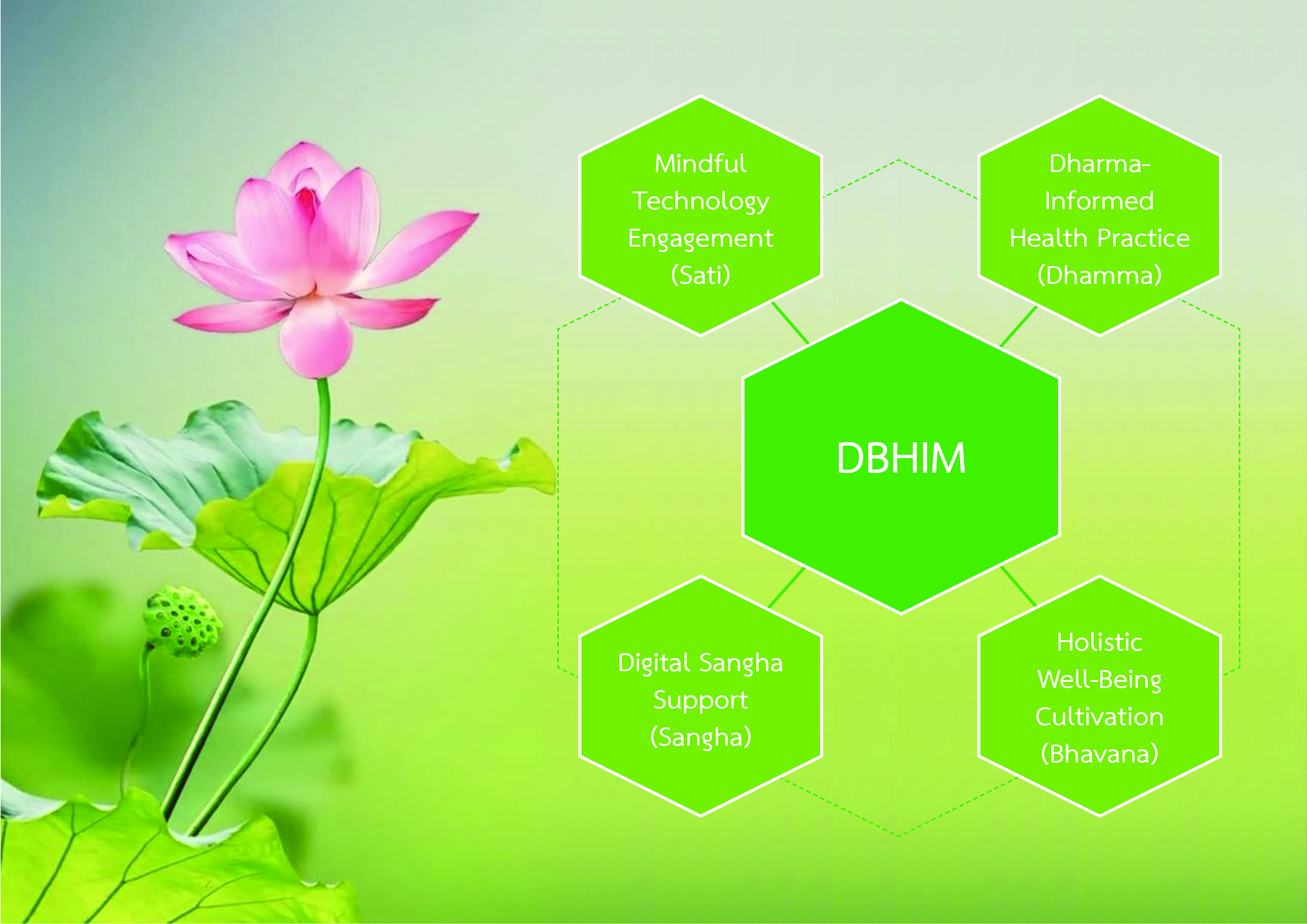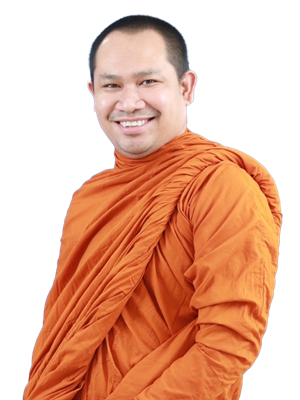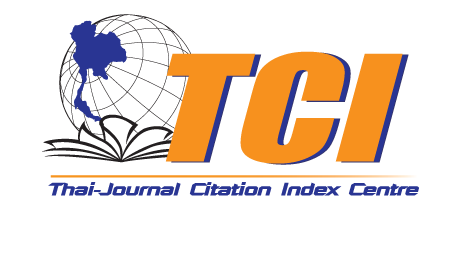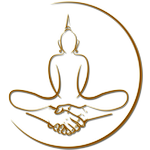INTEGRATING BUDDHIST WISDOM WITH HOLISTIC HEALTH PROMOTION: A CASE STUDY OF MONKS IN THE DIGITAL AGE IN MUANG UTTARADIT DISTRICT
Keywords:
Buddhist Wisdom, Holistic Health Promotion, Digital Health Literacy, Monastic Health, UttaraditAbstract
Background and Objectives: In the rapidly evolving landscape of the 21st century, the intersection of ancient wisdom and modern health practices has gained increasing attention. This convergence was particularly evident in Thailand, where specific Buddhist practices had long been intertwined with society. As digital technologies permeated contemporary life, even monasteries-traditionally viewed as bastions of contemplation-were not immune to these influences. This research aimed to examine how Buddhist monks in Muang Uttaradit district integrated traditional wisdom with modern health promotion strategies, analyze digital technologies' impact on their health practices, and identify potential synergies and challenges in combining Buddhist teachings with digital tools for holistic health promotion.
Methodology: The study employed a mixed-methods research design. A stratified random sample of 200 monks from Muang Uttaradit district participated in the quantitative phase, utilizing structured questionnaires, a Digital Health Literacy Assessment Tool, and a modified Five Facet Mindfulness Questionnaire. For the qualitative phase, in-depth interviews were conducted with 17 monks selected through purposive sampling. Data analysis involved descriptive and inferential statistics for quantitative data and thematic analysis for qualitative data, with integration through joint display analysis.
Main Results: The study revealed a significant integration of traditional Buddhist practices with modern health promotion approaches. Daily meditation (85.5%) and mindful eating (72.0%) coexisted with the adoption of physical exercise (45.5% Daily) and health apps (25.5% Daily). Most monks (77.5%) demonstrated moderate to high digital health literacy levels. However, a digital divide was observed, with older monks facing more challenges (r = -0.62, p < 0.001). Qualitative data highlighted the use of digital platforms for disseminating health-related Buddhist teachings and facilitating community engagement. The research identified synergies, including enhanced mindfulness through app-guided meditation and improved health monitoring, alongside challenges such as potential digital distraction and maintaining the authenticity of traditional practices.
Involvement to Buddhadhamma: This research fell under Applied Buddhism, specifically "Buddhist innovations applied to solve modern social problems." The study applied the Four Bases of Success (Iddhipada 4) comprising aspiration (Chanda), persistence (Viriya), attention (Citta), and examination (Vimamsa) as a framework for achieving success in health promotion. The study recognized that health practices could evolve while maintaining Buddhist teachings' essence, guiding an adaptive approach that preserved core values while embracing beneficial technological innovations.
Conclusions: Monks in Muang Uttaradit district were actively navigating the intersection between Buddhist wisdom and digital-age health promotion. The digital-age Buddhist Health Integration Model (DBHIM), comprising four components-mindful Technology Engagement, Dharma-Informed Health Practices, Digital Sangha Support, and Holistic Well-being Cultivation-provided a framework for understanding this integration with applications beyond monastic communities. Recommendations included developing tailored digital health literacy programs, promoting intergenerational knowledge exchange, creating Buddhist-informed digital health tools, and implementing holistic well-being programs that integrate ancient wisdom with contemporary approaches.
References
Baer, R. A., Smith, G. T., Hopkins, J., Krietemeyer, J. & Toney, L. (2006). Using self-report assessment methods to explore facets of mindfulness. Assessment, 13(1), 27-45. https://doi.org/10.1177/1073191105283504.
Braun, V. & Clarke, V. (2021). Can I use TA? Should I use TA? Should I not use TA? Comparing reflexive thematic analysis and other pattern-based qualitative analytic approaches. Counselling and Psychotherapy Research, 21(1), 37-47. https://doi.org/10.1002/capr.12360.
Creswell, J. W. & Creswell, J. D. (2022). Research design: Qualitative, quantitative, and mixed methods approaches. (6th ed.). Thousand Oaks, California, United States of America: SAGE Publications.
Etikan, I. & Bala, K. (2023). Sampling and sampling methods. Biometrics & Biostatistics International Journal, 6(5), 149-151.
Guetterman, T. C., Fetters, M. D. & Creswell, J. W. (2021). Integrating quantitative and qualitative results in health science mixed methods research through joint displays. Annals of Family Medicine, 13(6), 554-561.
Nilchaikovit, T. & Wisajun, P. (2023). Buddhist approaches to mental health and well-being during the COVID-19 pandemic in Thailand. Journal of Religion and Health, 62(1), 45-58.
Norman, C. D. & Skinner, H. A. (2006). eHEALS: The eHealth Literacy Scale. Journal of Medical Internet Research, 8(4), e27. https://doi.org/10.2196/jmir.8.4.e27.
Phra, S., Thongprayoon, C. & Wattanapisit, A. (2022). Digital technology adoption among Thai Buddhist monks: Implications for health and well-being. Asian Journal of Buddhist Studies, 15(2), 112-128.
Polit, D. F. & Beck, C. T. (2020). Nursing research: Generating and assessing evidence for nursing practice. (11th ed.). Philadelphia, Pennsylvania, United States of America: Wolters Kluwer.
Thananart, M., Tori, C. D. & Emavardhana, T. (2021). A longitudinal study of the effects of Buddhist meditation practices on mental health outcomes in Thailand. Mindfulness, 12(3), 789-801.
Yamane, T. (1967). Statistics: An introductory analysis. (2nd ed.). New York, United States of America: Harper and Row.

Downloads
Published
How to Cite
Issue
Section
License
Copyright (c) 2025 Journal of Buddhist Anthropology

This work is licensed under a Creative Commons Attribution-NonCommercial-NoDerivatives 4.0 International License.







